Customers are the heart of every business. A business’s success depends on quality products/services and meeting and exceeding customer needs.
Customer needs and expectations are very different from a few years ago. The digitalization boom and the desire to have everything at their fingertips with a personalized experience have become common mindsets among customers.
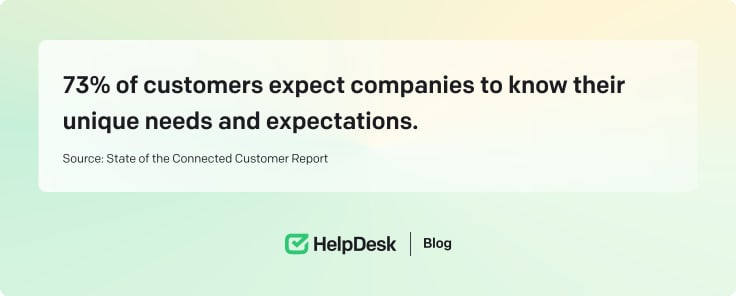
Understanding customer needs
Understanding and fulfilling customer needs is crucial to developing products that resonate with customers. Let’s start by clarifying customer needs and how to identify them.
What are customer needs?
Customer needs are the factors or motives that influence customers’ purchasing decisions. They can be expressed and unexpressed. Customers want to fulfill them when interacting with your business or competitors. The needs can be related to specific features, benefits, or outcomes they want from the product.
To better understand, consider the example of a customer wanting to purchase a smartphone. They may be looking for a smartphone with a longer battery life, fast processing speed, and a high-resolution camera. If you offer a phone with all those features and competitive pricing, you will likely convince the customer to purchase.
Customer needs can be categorized into three elements:
-
Practical needs: These reflect the features or performance customers expect from the product/service. For example, more extended battery, high-resolution camera, etc.
-
Emotional needs: These reflect the emotional connection customers want with the product/service, such as a sense of excitement and comfort.
-
Social needs: These reflect the need to meet social status or acceptance. For example, purchasing an iPhone needs to fulfill social status and acceptance.
Simply put, customer needs are the driving factors behind purchasing decisions. Therefore, understanding customer needs is crucial for creating winning products and services and forming long-lasting customer relations.

Identifying customer needs
There are many ways to identify customer needs. Some of the common ways are as follows:
1. Surveys
Customer surveys are among the most effective ways to gain insights into customer needs. You can conduct surveys with customers before or after purchase. However, they work best after purchase, as customers are more willing to spare a few minutes to answer your survey questions.
A survey can ask customers about their experience with the product/service, the reason behind their purchase, the features they like, and similar elements. The questions can be like:
-
What problem were you trying to solve when you purchased this product?
-
What features did you find most valuable in the product?
-
Was there anything missing that would have improved your experience?
The choice of questions in a survey depends on your products and customer preferences. However, it is a great way to interact directly with your existing customers and see how well your products fulfill their needs.
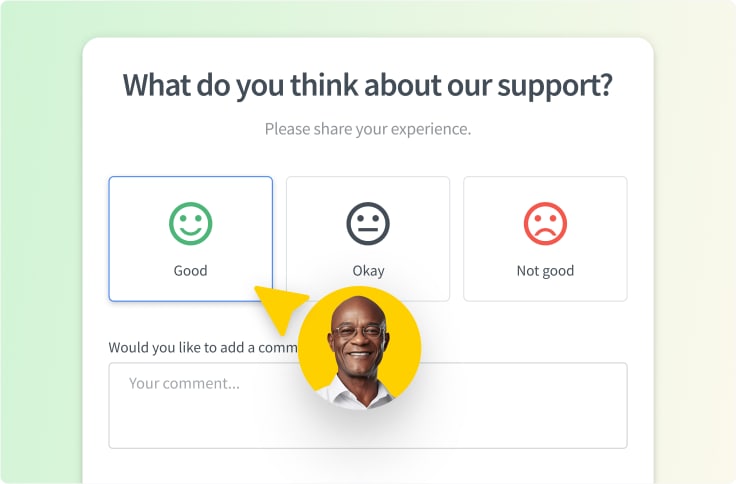
2. Focus groups
Focus groups are advanced surveys in which you gather people representing your target audience or persona.
In a focus group, you will talk directly with the participants. You will share the details of your product and try to understand their thoughts and needs regarding the product. The participants can even test the product and share their experiences.
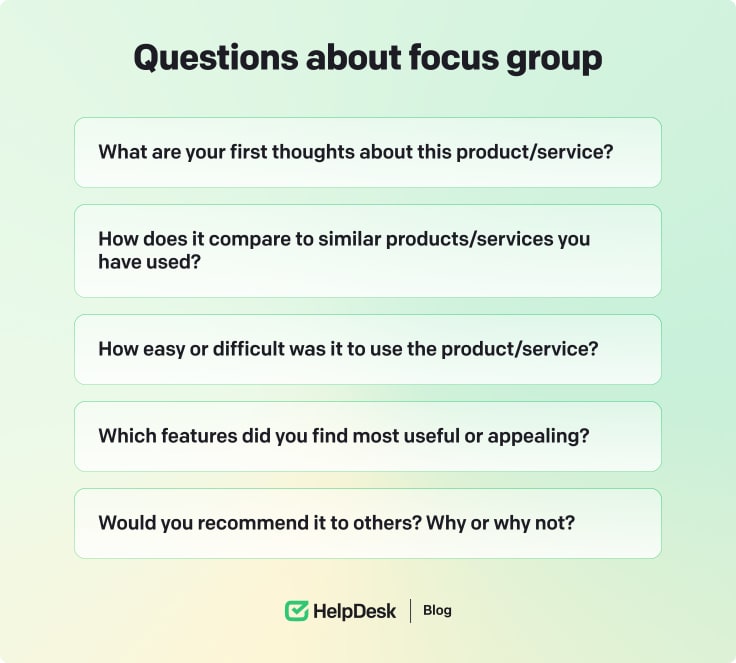
Overall, the goal of a focus group is to engage in open dialogue with attendees and get deep insights about customer needs and their experience with the product/service.
3. Online communities
Online communities are also an excellent source for identifying customer needs. These can include forums, social media groups, and other online platforms where customers share honest opinions, complaints, and feature requests.
For example, LEGO Ideas is a community where users can submit new ideas, rate others’ suggestions, and engage in other activities.
You can find online communities that match your targeted products/services. Afterward, you can research through these communities to identify customer needs and expectations.
4. Keyword research
Keyword research is another effective way to determine what your targeted customers are searching for. It’ll provide you with the most popular keywords related to your product or service.
For example, if you sell newborn products, you might find that customers are more frequently searching for “best strollers for newborns,” “hypoallergenic baby formula,” and related terms.
Once you know the target keywords, you will have two benefits. First, you can prioritize products/services that customers wish to purchase. Second, you can use those keywords in your marketing campaigns and SEO to generate more organic traffic.
In addition to the above four ways to identify customer needs, analyzing customer feedback and social media interactions can provide valuable insights.
Gathering customer feedback
Customer feedback is the primary source of information about what customers expect from your brand and how they perceive it. It reflects their emotions and satisfaction with the products.
The importance of customer feedback
Customer feedback is one factor that helps you understand customer needs and expectations. It reflects customers’ opinions, insights, and information about your products or services.
Collecting and analyzing customer feedback can help businesses identify areas for improvement and make data-driven decisions.
Below are some key reasons that reflect the importance of customer feedback:
-
Help listen to the voice of customers.
-
Measure customer satisfaction.
-
Identify areas of improvement.
-
Brand advocacy with good reviews.
-
Enhance customer loyalty and retention.
-
Make customers feel valued.
-
Informed business decisions.

Meeting customer needs
After identifying customer needs, the next aspect is meeting them. The process varies from business to business, but excellent customer service, simple solutions, and personalization are vital to meeting customer needs.
Providing great customer service
Excellent customer service makes customers feel heard and valued throughout their interaction with the brand.
Customer service is the assistance you offer customers before, during, and after they purchase your products. Businesses usually have a dedicated customer service team that interacts with customers and resolves their queries throughout the customer journey.
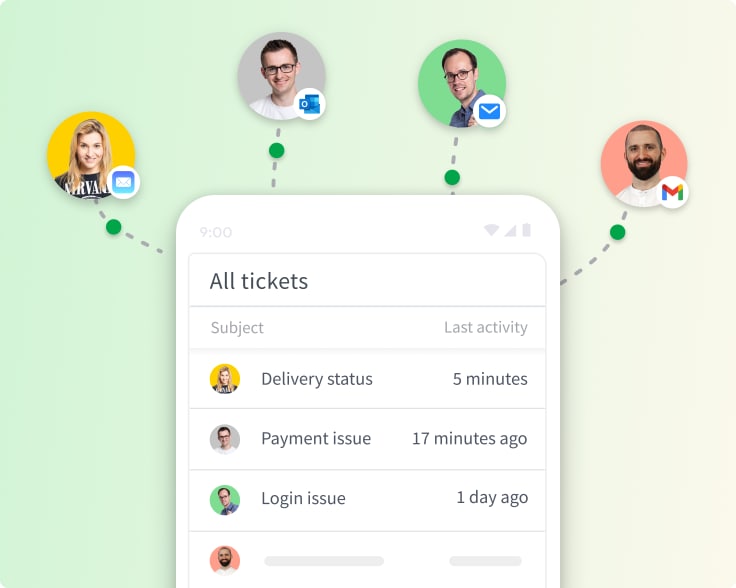
To meet customer needs, the customer service representative must be:
-
Sympathetic: Show understanding and empathy toward customer concerns.
-
Transparent: Provide honest and straightforward details about the product/service.
-
Responsive: Ensure fast and responsive response to customer queries.
Empathy and fairness are essential customer service skills that can build trust and foster deeper connections with customers.
In addition to having an excellent customer service team, you should also focus on using feature-rich customer service software to streamline operations.
HelpDesk is a well-known customer service software that streamlines ticket handling and issue resolution. It provides an omnichannel support platform for agents to communicate with customers through email, social media, and other platforms from a unified interface. Furthermore, it can also assist in collecting customer feedback and proactive outreach.
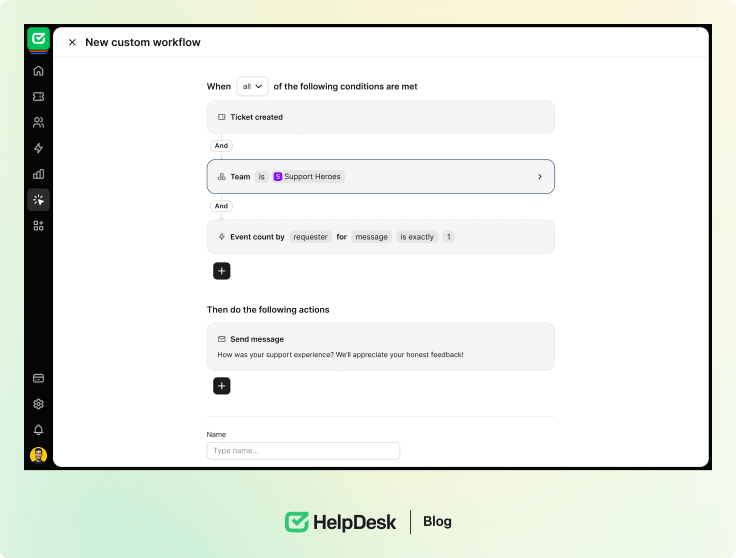
Simple solutions and personalization
Customers want easy-to-use solutions that require no to minimal learning curve. For example, many no-code website builders now provide an easy way for customers to build customized websites. Users don’t need any technical expertise to use those platforms and build websites.
The key to meeting customer needs is to support customers with simple solutions that are easy to master in minimal time. Moreover, they help businesses resolve customer issues quickly and efficiently.
The second focus should be on personalization. Did you know 71% of consumers expect companies to offer personalized interactions (source)? Similarly, 90% of well-known marketers believe personalization significantly influences business profitability (source).
Providing personalized experiences can make customers feel valued and appreciated. It increases their engagement with the brand and convinces them to make repeat purchases.
Strategies for meeting customer needs
Meeting customer needs requires you to be strategic, whether it’s about functionality, pricing, or design.
Functionality and price
Functionality and price are highly interlinked factors in meeting customer needs. From the customer’s perspective, they want products that provide the most value for money. They want feature-rich products but at the lowest price possible. However, you must balance affordability and value.
There may be a scenario in which your product offers the most advanced features compared to competitors, but the price is a bit higher. Although you may meet customer needs, the price tag may make many customers opt for your competitors or low-cost alternatives.
The right strategy is to find a way to ensure that your product/service’s functionality meets core customer needs while maintaining competitive pricing. It’ll attract more customers, increase product usability, and evoke positive emotions. Afterward, these loyal customers will be willing to pay a bit extra to enjoy the premium-quality products you offer.
The easiest help desk system for a team like yours
Discover HelpDesk

Design matters
Design plays a significant role in addressing customer needs and exceeding expectations. Aesthetics can evoke pleasure, attraction, and joy and influence social status.
According to McKinsey, businesses that embrace design generate 32% more revenue than competitors (source). Similarly, 70% of customers believe the brand just by its product design (source).
A well-designed product addresses three needs of customers:
-
Practicality: A well-designed product is easy to use. It has excellent feature placement, choice of colors, and overall functionality.
-
Emotionality: The product’s attractive and premium look increases its attraction and emotional connection. This urges the customer to make a purchase.
-
Sociality: The attractive design influences the status symbol. It reflects a user’s specific lifestyle and uplifts social identity.
Simply put, the design of a product or service directly influences how customers feel about it even before using it. The goal should be to craft a perfectly designed product that fulfills the functional and visual customer needs. If you succeed, you’ll be able to attract customers and build a loyal base.
Building loyal customers
Every business wants loyal customers. Interestingly, 59% of consumers in America say that if they are loyal to a brand, they remain faithful for life (source).
Identify customer needs and exceed expectations
Customers can become loyal to a brand if it fulfills their needs and exceeds expectations. For example, consider a PDF editor tool that helps users edit, annotate, convert, fill, and sign PDFs. It incorporates all the essential features that customers want from a PDF tool. However, it does not stop there. The tool exceeds customer expectations by offering some additional features. It also provides an AI assistant to summarize/translate PDFs and an AI chatbot to chat with PDFs.
When a product meets customer needs and exceeds expectations, it increases customer loyalty. Think of it yourself: Why would a customer want to use a different PDF tool when the one they are using provides added value through innovative solutions?
Moreover, the key to building loyal customers is to identify customer needs, fulfill those needs, and go one step further with additional functionalities. You can also focus on providing personalized experiences and simple solutions, as they are also seen to influence customer loyalty.
Increase customer satisfaction and drive sales
Customer satisfaction is directly linked to driving sales and increasing loyalty.
Customer satisfaction incorporates diverse areas, such as product quality, ease of use, design, customer support, and other factors. You must be exceptional in all these areas to meet customer satisfaction.
There are many ways to increase customer satisfaction and drive sales. You can use customer feedback to anticipate customer needs, make data-driven decisions, identify areas for improvement, and increase customer satisfaction. Alternatively, you can focus on providing a personalized customer experience to make customers feel valued and improve satisfaction.
Once customers are satisfied, it drives sales. Customers will make repeat purchases with the brand and promote your brand for free with word-of-mouth marketing. 72% of customers will share their positive experiences with six or even more people (source). Furthermore, they will also leave positive reviews, attracting more customers.
In short, focusing on customer satisfaction leads to more sales and customer loyalty to the brand.
Creating a customer-centric business
A customer-centric business strategy focuses on offering the best experience to customers at every stage of the customer journey.
The importance of customer-centricity
Creating a customer-centric business is key to meeting customer needs. It prioritizes customer needs and expectations above all else.

Customer centricity makes customers the driver of all business decisions. All the research and development are based on what the customer needs. Many success stories of brands became successful just by following the customer-centric business model.
Summary
Meeting customer needs and exceeding expectations is a necessity rather than a choice. Rapidly changing customer preferences, increasing competition, and technological advancements necessitate the development of customer-centric businesses.
As mentioned earlier, when a business begins to meet customer needs, it results in customer satisfaction, increased sales, and long-term customer loyalty. Therefore, prioritizing meeting and exceeding customer needs every time helps build lasting customer relationships.


